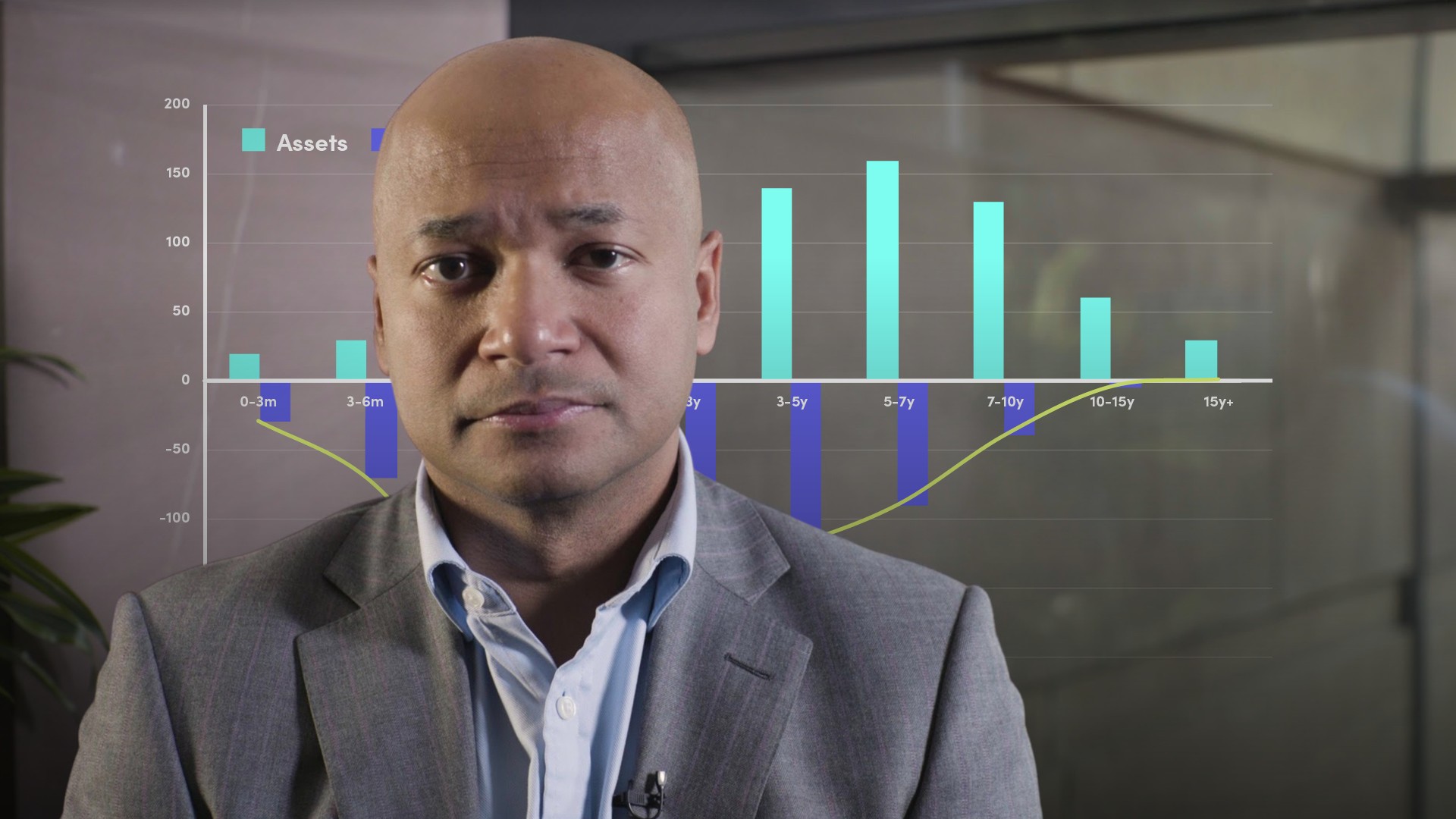
Bank Liquidity Risk Metrics

Moorad Choudhry
34 years: Banking and Capital Markets
It is essential that banks use a range of liquidity measures for risk estimation and forecasting. Here, Moorad details the range of liquidity metrics that are employed by banks, looking beyond what is required under regulators’ rules.
It is essential that banks use a range of liquidity measures for risk estimation and forecasting. Here, Moorad details the range of liquidity metrics that are employed by banks, looking beyond what is required under regulators’ rules.
Subscribe to watch
Access this and all of the content on our platform by signing up for a 7-day free trial.

Bank Liquidity Risk Metrics
17 mins 4 secs
Key learning objectives:
Define the different liquidity risk metrics
Understand the importance of these metrics
Overview:
Bank liquidity risk management is measured by a variety of metrics. This reason for performing multiple calculations is to allow senior management to have the most accurate estimate of the liquidity exposure of the bank at any time. Some different baseline liquidity metrics include Loan-to-Deposit ratios, 1-week & 1-month liquidity ratios, Cumulative liquidity models, Liquidity risk factors, Concentration and funding source reports, and Inter-entity lending reports. These metrics benchmark liquidity risk and are part of the minimum information needed to adhere to regulations.
Subscribe to watch
Access this and all of the content on our platform by signing up for a 7-day free trial.
Why is liquidity risk management important?
Liquidity risk cannot be represented by a single metric, but rather by an array of metrics. This reflects the fact that the business of liquidity risk, like the wider field of asset-liability management, is as much of an art as science. The point of calculating and reporting liquidity risk metrics is to enable senior management to have the most accurate, and up-to-date, estimation of the liquidity exposure of the bank at any time. Regulators oblige banks to report specified liquidity metrics on a regular basis.
What are the key metrics?
The following metrics provide details on the exposure of the bank to funding rollover or “gap” risk; the daily funding requirement, and a forecast or estimate of what this is likely to be at a forward date; the extent of “self-sufficiency” of a branch or subsidiary:
| Description | |
| Loan: Deposit Ratio | This is the standard and commonly-used metric, typically reported weekly or monthly. It measures the relationship between lending and customer deposits, and is a measure of the self-sustainability of the bank (or the branch or subsidiary). The LDR is a good measure of the contribution of customer funding to the bank’s overall funding, and as such it is worth monitoring against a specified limit. |
| 1 Week & 1 Month | These are the standard liquidity ratios that are commonly measured against a regulatory limit requirement. Liquidity ratios are an essential measure of “gap” risk. They show net cash flows, including the cash effect of liquidating “liquid” securities, as a percentage of liabilities, for a specific maturity “bucket”. |
| Cumulative Liquidity Model | This is an extension of the liquidity ratio report and is a forward looking model of inflows, outflows and available liquidity, accumulated for a 12-month period. It recognises, and helps to predict, liquidity stress points on a cash basis. |
| Liquidity Risk Factor | The liquidity risk factor (LRF) measure is a static snapshot that shows the aggregate size of the liquidity gap: it compares the average tenor of assets to the average tenor of liabilities. The higher the LRF, the larger the liquidity gap and hence the greater the liquidity risk being run by the bank. |
| Concentration and Funding Source Report | This report shows the extent of reliance on single sources of funds. An excess concentration to any one lender, sector or country is an early-warning sign of potential stress points in the event of a crash event. Banks should not become over-reliant on any one source of funds; outside the retail deposit sector they should be wary of excessive reliance on one class of depositor. |
| Inter-Entity Lending Report | This report is relevant for Group and consolidated banking entities. Intra-group lending is common in banking entities, and in some jurisdictions subject to cross-border and cross-legal entity regulatory limits. Hence this report is a valuable tool used to determine both how reliant a specific banking subsidiary is on Group funds, and also to what extent it is approaching regulatory limits. |
| Liquidity Coverage Ratio | The liquidity coverage ratio (LCR) metric promotes short-term resilience to liquidity shocks; setting a limit for it ensures that sufficient high quality liquid assets are maintained to offset cash outflows in a stressed environment. The LCR identifies the amount of unencumbered, high quality liquid assets required to offset the net cash outflows arising in a short-term liquidity stress scenario. A regulatory limit for the LCR ensures that banks meet this requirement continuously. The LCR should be viewed as an essential liquidity metric, to be monitored against in-house limits irrespective of any local regulatory requirements. It is calculated as: High Quality Liquid Assets / Stressed net cash outflows over 30 days |
| Net Stable Funding Ratio | A significant aspect of Basel III is the liquidity measurement metric known as the net stable funding ratio (NSFR). The NSFR promotes resilience over the longer-term; setting a limit for it ensures that sufficient long-term funding is in place to support the bank’s balance sheet. In other words, maintaining an adequate NSFR should help considerably in ensuring a stable funding structure. It is typically used to monitor and control the level of dependency on volatile, short term wholesale markets, as a key structural balance sheet ratio. The BCBS defines NSFR as the following: Available Stable Funding / Required Stable Funding. |
Subscribe to watch
Access this and all of the content on our platform by signing up for a 7-day free trial.

Moorad Choudhry
There are no available Videos from "Moorad Choudhry"



























